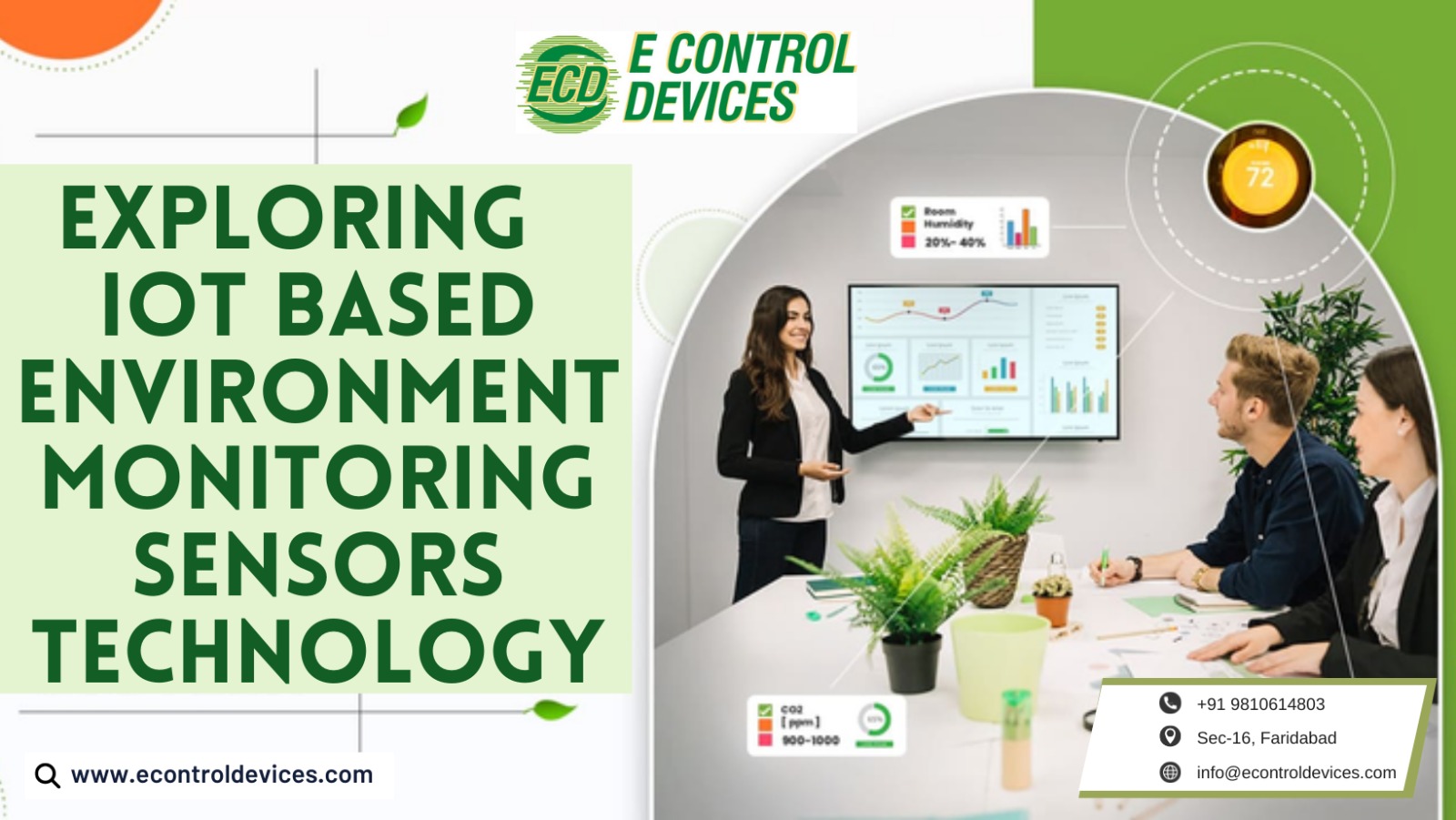Environmental monitoring plays a crucial role in understanding and safeguarding the health of our planet. By tracking various environmental parameters, we can assess the quality of air, water, soil, and ecosystems, enabling us to make informed decisions for conservation and sustainable development. With the rapid advancements in technology, one such innovation that has revolutionized environmental monitoring is IoT (Internet of Things) sensor technology. Through this blog, we will explore IoT sensor technology and its role in environmental monitoring.
What is Environmental Monitoring?
Environmental monitoring involves the systematic collection, analysis, and interpretation of data related to the environment. It provides valuable insights into the state of our natural resources and the impact of human activities on them. By monitoring environmental factors such as air quality, water quality, and soil conditions, we can identify potential risks, detect pollution sources, and mitigate the harmful effects on ecosystems and human health.
Effective Environmental Monitoring with IoT
IoT sensor technology has emerged as a game-changer in the field of environmental monitoring. The Internet of Things refers to a network of interconnected devices embedded with sensors, software, and connectivity, allowing them to collect and exchange data seamlessly. In the context of environmental monitoring, IoT sensors are deployed to measure and monitor various environmental parameters in real time.
The impact of IoT sensor technology on environmental monitoring is far-reaching. It enhances our ability to monitor air quality by measuring pollutants such as particulate matter, gases, and volatile organic compounds. Water quality monitoring benefits from IoT sensors that measure parameters like pH, dissolved oxygen, and turbidity, helping to identify contamination sources and ensure safe water resources. In soil monitoring, IoT sensors assist in tracking moisture levels, nutrient content, and temperature, aiding precision agriculture and efficient land management practices.
The integration of IoT sensors with environmental monitoring has not only improved data collection and analysis but has also fostered a more interconnected and data-driven approach to environmental conservation and sustainability. By harnessing the power of IoT sensor technology, we can make informed decisions, develop targeted interventions, and work towards a healthier and more sustainable future for our planet.
What are the applications of IoT sensors in Environmental Monitoring?
Let’s explore some key applications of IoT sensors in environmental monitoring:
- Air Quality Monitoring
IoT sensors equipped with air quality monitoring capabilities can measure various pollutants such as particulate matter (PM), carbon monoxide (CO), nitrogen dioxide (NO2), and ozone (O3). These sensors are designed to capture data at regular intervals, providing real-time information about the air quality in a particular location. They can be deployed in urban areas, industrial zones, or even inside buildings to assess air pollution levels accurately.
One notable example is the “Smart Citizen” project in Barcelona, where IoT sensors were distributed across the city to create a comprehensive air quality monitoring network. These sensors collected data on temperature, humidity, noise levels, and pollutant concentrations. The data was made publicly available, enabling citizens to make informed decisions about their daily activities and contributing to a better understanding of air pollution patterns.
- Water Quality Monitoring
IoT sensors designed for water quality monitoring can measure essential parameters such as pH levels, temperature, dissolved oxygen (DO), conductivity, and turbidity. They are often deployed in rivers, lakes, and other water bodies to monitor changes in water quality over time. These sensors can operate autonomously and transmit data wirelessly, enabling real-time monitoring and analysis.
These sensors continuously collect data on parameters like dissolved oxygen, nutrient levels, and water temperature. The real-time data helps researchers and policymakers identify pollution sources, detect harmful algal blooms, and implement appropriate conservation measures to protect the ecosystem.
- Soil Monitoring
IoT sensors designed for soil monitoring enable precise tracking of soil moisture content, temperature, and nutrient levels. These sensors are embedded in the soil and collect data at regular intervals. The information gathered helps farmers and land managers optimize irrigation schedules, fertilization plans, and overall crop health.
IoT sensors offer numerous benefits in precision agriculture, allowing farmers to make data-driven decisions and reduce resource wastage. By monitoring soil moisture levels, for instance, farmers can apply irrigation only when necessary, conserving water resources.
- Wildlife Tracking and Conservation
IoT sensors, such as GPS trackers and motion sensors, play a crucial role in wildlife tracking and conservation efforts. These sensors can be attached to animals or integrated into collars or tags. They collect data on animal movements, migration patterns, and behavior, providing valuable insights into their habitats and ecological interactions.
The Great Elephant Census initiative employed IoT-based tracking collars to monitor elephant populations across Africa. These collars used GPS and other sensors to track the elephants’ movements and collect data on their habitat preferences, migratory routes, and potential threats. Such initiatives aid in wildlife conservation by informing conservation strategies, identifying key habitats, and mitigating human-wildlife conflicts.
Conclusion
The challenges of including IoT in environmental monitoring still persist, such as ensuring seamless connectivity, managing massive data volumes, and extending sensor lifespan. The future of IoT sensor technology in environmental monitoring holds promise, with potential advancements in connectivity, energy efficiency, and miniaturization. Addressing ethical considerations and data privacy concerns will be crucial. With continued innovation and collaborative efforts, IoT sensors have the potential to play a pivotal role in safeguarding our environment and paving the way for a sustainable future.

